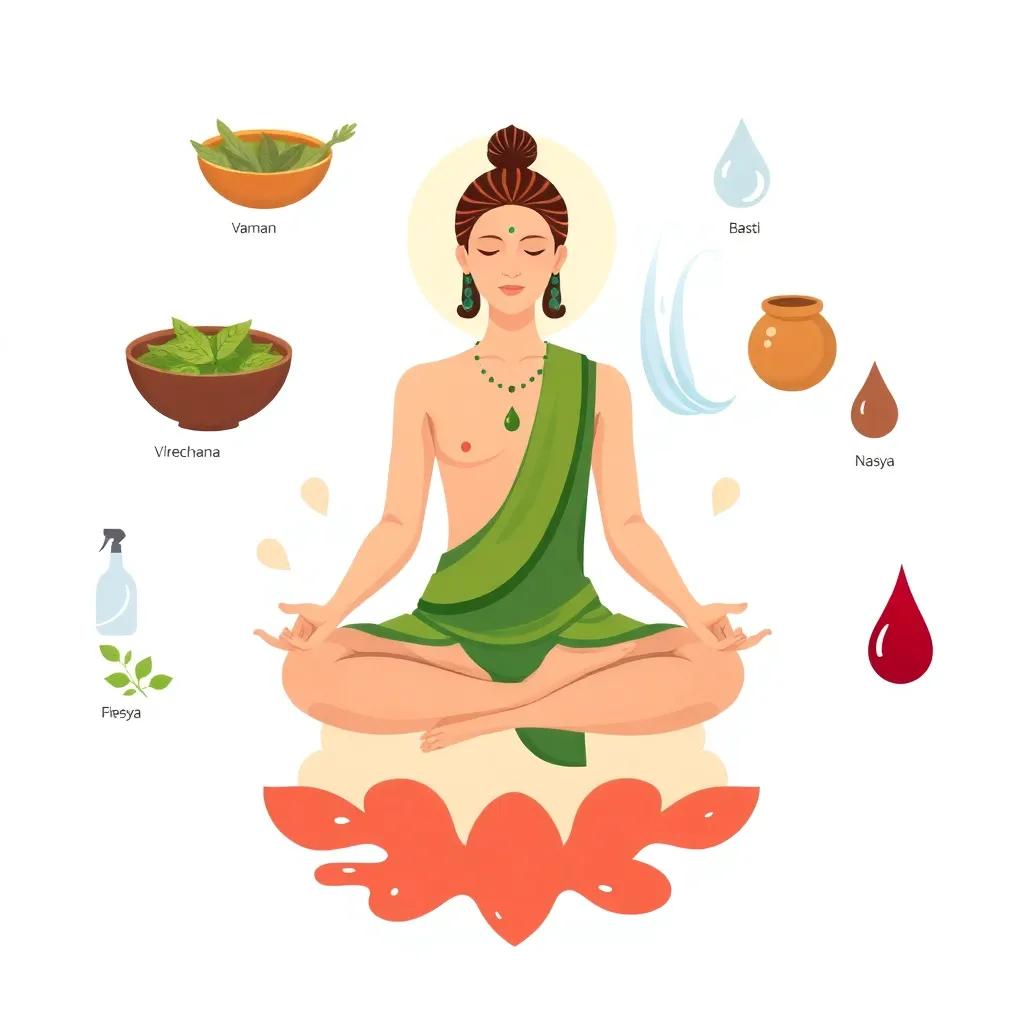Explore the principles of Ayurvedic detoxification, Panchakarma, and its benefits for modern health, including key procedures and scientific studies supporting its efficacy.
Discover how the ancient Ayurvedic practice of Panchakarma can detoxify your body, restore balance, and enhance overall well-being through its five key procedures.
Introduction to Ayurvedic Detoxification
Ayurveda, the ancient Indian system of medicine, has been practiced for thousands of years and is renowned for its holistic approach to health and wellness. One of its most profound detoxification methods is Panchakarma, a set of five therapeutic procedures designed to cleanse the body of toxins and restore balance. According to Dr. Vasant Lad, a renowned Ayurvedic practitioner and author, Panchakarma is the cornerstone of Ayurvedic medicine, offering a comprehensive approach to detoxification and rejuvenation.
The Five Key Procedures of Panchakarma
Panchakarma consists of five primary procedures, each targeting different aspects of the body’s detoxification process:
Vamana (Therapeutic Vomiting)
Vamana is a controlled process of therapeutic vomiting that eliminates excess Kapha (water and earth elements) from the body. This procedure is particularly beneficial for conditions like asthma, bronchitis, and chronic sinusitis. A study published in the Journal of Ayurveda and Integrative Medicine
found that Vamana significantly reduced symptoms in patients with chronic respiratory conditions.
Virechana (Purgation)
Virechana involves the use of herbal laxatives to cleanse the gastrointestinal tract, removing excess Pitta (fire and water elements). This procedure is effective for treating skin disorders, digestive issues, and liver problems. According to a 2018 study in the International Journal of Ayurveda Research
, Virechana improved liver function and reduced symptoms of irritable bowel syndrome (IBS) in participants.
Basti (Enema)
Basti is the administration of herbal oils and decoctions through the rectum to cleanse the colon and balance Vata (air and ether elements). This procedure is particularly effective for treating arthritis, constipation, and neurological disorders. A 2017 study in the Ayurvedic Journal of Health
reported that Basti therapy significantly reduced pain and improved mobility in patients with osteoarthritis.
Nasya (Nasal Administration)
Nasya involves the application of medicated oils or powders through the nasal passages to cleanse the head and neck region. This procedure is beneficial for treating sinusitis, migraines, and neurological disorders. A 2019 study in the Journal of Traditional and Complementary Medicine
found that Nasya therapy improved cognitive function and reduced headache frequency in participants.
Raktamokshana (Bloodletting)
Raktamokshana is a specialized procedure that involves the removal of impure blood to treat skin disorders, chronic infections, and inflammatory conditions. This procedure is less commonly used today but remains an important part of traditional Ayurvedic practice. A 2016 study in the Journal of Ayurveda and Holistic Medicine
found that Raktamokshana effectively reduced symptoms of psoriasis in patients.
The Role of Diet and Lifestyle in Ayurvedic Detoxification
In addition to the five key procedures, Ayurvedic detoxification emphasizes the importance of diet and lifestyle in supporting the body’s natural cleansing processes. According to Dr. David Frawley, an Ayurvedic scholar and author, Diet is the foundation of health in Ayurveda, and a proper diet is essential for effective detoxification.
A balanced Ayurvedic diet includes fresh, organic foods that are easy to digest and rich in nutrients. Lifestyle practices such as yoga, meditation, and regular exercise are also integral to maintaining balance and promoting detoxification.
Scientific Evidence Supporting Ayurvedic Detoxification
While Ayurveda has been practiced for thousands of years, modern science is beginning to validate its efficacy. A 2020 review published in the Journal of Ethnopharmacology
found that Ayurvedic practices, including Panchakarma, have significant potential for treating chronic diseases and promoting overall health. The review highlighted the anti-inflammatory, antioxidant, and immune-modulating effects of Ayurvedic herbs and therapies.
Practical Tips for Incorporating Ayurvedic Detoxification into Daily Life
For those interested in incorporating Ayurvedic detoxification into their daily routine, here are some practical tips:
- Start your day with a glass of warm water and lemon to stimulate digestion and detoxification.
- Incorporate Ayurvedic herbs such as turmeric, ginger, and triphala into your diet to support cleansing and balance.
- Practice daily yoga and meditation to reduce stress and promote mental clarity.
- Consider consulting with a qualified Ayurvedic practitioner for personalized guidance on Panchakarma and other detoxification practices.
Conclusion
Ayurvedic detoxification, particularly through the practice of Panchakarma, offers a comprehensive approach to cleansing the body, restoring balance, and enhancing overall well-being. Supported by both ancient wisdom and modern science, these practices provide a powerful tool for achieving optimal health in today’s fast-paced world. By incorporating Ayurvedic principles into your daily life, you can experience the profound benefits of this ancient science and embark on a journey toward greater health and vitality.




